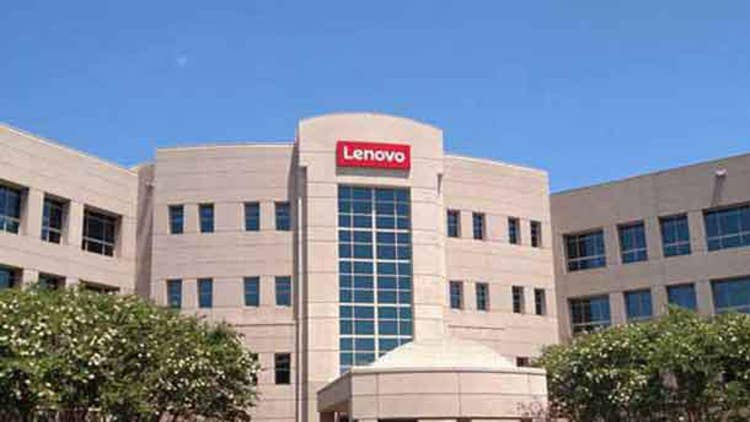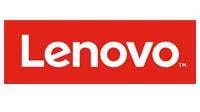Lenovo President On Besting Dell, HPE And Driving PC Services Via Partners
Here’s Lenovo North American President Vladimir Rozanovich plan to win over market share from competitors, capture more channel partner mindshare and take the company from a $60 billion PC leader into a $100 billion end-to-end technology powerhouse.

‘I Need To Fight Harder Against Them’: Rozanovich’s $100 Billion Plan For Lenovo
Vladimir Rozanovich plans to elevate Lenovo from a $60 billion PC company to a $100 billion end-to-end infrastructure, devices and PC as-a-service world leader by taking share from competitors like Dell Technologies as the company’s One Lenovo vision takes shape.
Rozanovich, a 24-year AMD veteran who recently became Lenovo’s North America President, said he’s going to fight ruthlessly to win more North America market share from the likes of Dell, Hewlett Packard Enterprise and even Apple in PCs, mobility, data center infrastructure and emerging as-a-service markets.
“I came to Lenovo because of what we’re actually implementing right now, which is our One Lenovo or Lenovo 360 plan. If I was just going to come here to be the head of the PC products where its, ‘Hey, Lenovo is No. 1 in PC worldwide and we’re No. 3 in North America, but we want to make sure that we get from No. 3 to No. 2,’— I mean, that’s exciting, but it’s not as exciting as saying, ‘Hey, Lenovo is not just a PC company. It’s a complete enterprise, small business and consumer organization that is going to service IT needs across a broad spectrum—from PCs, to phones, to tablets, to networks, to data center, to services and software, and supporting complex solutions—that’s why I’m here,” said Rozanovich, Lenovo’s North America President, in an interview with CRN. “That’s the part where I was like, ‘Wow, this is exactly where I want to be in my career: trying to transform a $60 billion company up to $100 billion company.’”
His goal is to win over customers and channel partners mindshare from its main U.S.-based competitors via new channel incentives, innovation and taking PC as-a-Service to a new level.
“We have three powerful OEMs here in our backyard in Apple, HPE, and Dell. And they’re going to fight ruthlessly in the U.S. market to make sure that they do not give up on their positions here,” said Rozanovich, adding that 75 percent of Lenovo’s business goes through channel partners. “For me, the guy who’s leading this market, I need to fight harder against them.”
Rozanovich speaks to CRN about Lenovo’s supply chain differentiation, besting Lenovo’s competition in North America, driving PC as-a-Service sales via channel partners, as well as winning “the hearts and minds” of channel partners.
“When we look at how our competitors like Dell are defocusing on the channel, it means they’re taking a lot of this business direct in many cases. They might be doing it to booster their profit margins in some in some areas, but the reality is, it’s taking away revenue opportunities for the channel,” said Rozanovich. “And in many cases, it’s taking customers away from the channel.”

With remote work here to stay and PC sales at a record high, what’s Lenovo doing to enable channel partners to make PC as-a-Service a new major revenue stream?
We’re at the point now where businesses are actually looking at where do they want to take their environments from a PC standpoint. I have meetings all the time where the number one topic of conversation is, ‘We want to go to a fully managed PC environment. Lenovo, we think you are someone that can actually go engage and do this with us.’ We are looking at everything from product deployment—making sure that that things are pre-loaded, and things like security software is loaded up— to making sure that there’s device monitoring to ensure that people are buying the right products for their deployment and enterprise, all the way down to asset recovery on the backend so that you’re recovering those assets in a very ecofriendly way.’
The reality is, it’s the channel partners that we are looking to be the frontend of that. In many cases, Lenovo wants to be the backend for devices as-a-Service or our TruScale initiatives. So what we’re seeing is if we were to go out with the channel partner, the channel partners have some of the best relationships with these end customers. In some cases, even better than Lenovo. So we need those channel partners to continue to be the face of the company. What we want to do, is we want to make sure that we’re delivering the technology, the products, and most importantly, those services, and being that backend for Devices-as-a-Service.
What we want to get to where channel partners can literally give individuals in corporations an office in a box, wrapped in software services and solutions.
I believe people are going to be looking at their devices, and they’re going to say, ‘You know what? IT should be in the business of workforce enablement. Not in the business of: they order, deploy and service the products in many cases.’

Talk about this major corporate shift toward rethinking IT and how PC-as-a-Service can drive that?
We’ve seen the cloud momentum over the last few years and how the Software-as-a-Service and Infrastructure as-a-Service has really taken off and people move from Capex to Opex models. I really do believe that the next iteration of this in our space is people are going to be looking at their devices and they’re going to say, ‘You know what? IT should be in the business of workforce enablement. Not in the business of: they order, deploy and service the products in many cases.’ Obviously, they need to be there to ensure that the right things are being done. But the reality is, meetings I have with partners and customers, it’s all about, ‘How do we enable our workforce to be more productive, and IT delivering more of those applications and usage models to employees?’
If we can get to the point where PC-as-a-Service can do, for example, let’s say a new employee comes on board to a corporation where they can literally get an office in a box. And that’s part of one of the stories of our new Software Services and Solution Group portfolio where we are getting into this habit now of saying, ‘Hey, here’s the package of if you have a remote employee coming on board, and this is something we can do through channel partners, we can literally say, ‘Okay, here’s the 14 different OPMs that you need to literally set up an office in the box. And, Mr. channel partner, you could go ahead and deploy this for your customer base.’
How much of Lenovo’s business goes through the channel?
Over 75 percent of Lenovo business goes through the channel partners. We’ve seen other OEMs start making statements that they’re backing away from the channel. From my point of view, the channel is the way we are going to address the market. And we have stronger relationships now than ever in the channel. Something that I’m going to make sure we continue doing is, as we look at new—not just products through the channel—but also services through the channel, they’re taking the lead. And we’re doing some of the heavy lifting behind them to enable them on what customers really need.

With your vast history at AMD working with companies like Dell and HPE, what do you see is Lenovo’s market differentiation compared to Dell and HPE?
The first thing is it comes back to supply chain.
But first I was to talk about what we’re hearing in the in the market. For years, when I ran the Americas business at [AMD] I did engage with everybody. From a competitive standpoint, When we look at how our competitors like Dell are defocusing on the channel, it means they’re taking a lot of this business direct in many cases. They might be doing it to booster their profit margins in some in some areas, but the reality is, it’s taking away revenue opportunities for the channel, and in many cases, taking customers away from the channel. We are making sure that we are putting product into the channel to service these customers.
One of the reasons that you see us be number one on a worldwide basis, and I would say in North America we probably are one of the strongest—actually I will say we are the strongest PC partner right now from an OEM standpoint—that’s because we’re actually funneling product to make sure that the channel does have inventory of a Lenovo products. What I’m hearing from the other OEMs, is they’re not necessarily doing that. So that’s taking away opportunity from the channel partners. It’s one of the reasons that I’m seeing so much interest in wanting to continue to work with Lenovo is because we do at this channel first mentality.
So from my perspective, I’m thrilled with what the competitors are doing. Because they’re actually losing touch with those organizations that have delivered on bringing customers to them and making sure that they’re looking at revenue scopes across that end customer base—that’s what the channel does incredibly well.
So you’re going to see a commitment out of us that we’re going to really focus in on the those partners. We’re going to set priorities that say, ‘We want our business to continue to flow that way.’ That’s the biggest competitive differentiation we have right now is that we are actually one of the few OEMs that is setting channels as a priority, versus setting them a secondary for trying to satisfy other needs.

How has Lenovo’s manufacturing supply chain helped you drives sales specifically in North America?
So in North America, specifically, we had our highest revenue in PC products ever [in second quarter 2021]. What you also saw is we had a real strong premium to market, which means we’re growing faster than the market.
A lot of that has to do with Lenovo being one of the few PC manufacturing companies that still owns all our own manufacturing facilities. We own it on a global basis. We build in nine different countries around the world. We service 180 global markets and countries around the world.
Some of the other OEMs have to rely on ODMs to actually build some of their products. Because we have this tie-in directly to our manufacturing, it really is one of the crown jewels that we have as a company. It allows us to actually make sure we are enabling this hypergrowth in the market.
So for North America, every single one of our businesses achieved expectations. So when I look at the PC side of the business, a huge premium to market, massive areas of success—especially some of the vertical markets we focus on. So workstation was absolutely a fantastic quarter last quarter. We saw tons of people starting to move to some of the unique products that Lenovo is offering.

What’s Lenovo’s biggest competitive challenge right now in North America?
When I look at how specifically in North America we fight our competition, we have three powerful OEMs here in our backyard in Apple, HPE, and Dell. And they’re going to fight ruthlessly in the U.S. market to make sure that they do not give up on their positions here.
So one of the things that I have seen that has been most eye opening to me is, those three OEMs are going to over-invest here in the U.S., which means I need to fight even harder here in the U.S. For me, the guy who’s leading this market, I need to fight harder against them because they’re going to ship more product into the U.S. than they’re going to ship into Europe, into Asia/Pacific, into Latin and into China. And vice versa.
On our side, we are number one in China. We are number one in Europe. My biggest thing is the competition of how those guys are entrenching here, favoring the U.S. over some other geographies. That’s a hard thing to fight against.
But I’m actually excited about that because the big goal that I have for us as an organization is ‘Yeah, we’re number three today in the U.S. market. But there is no question that I’ve set the goals for the team that within 24 months, I want to make sure I’m the number two player here in the US market.’

With channel partners the tip of the spear for Lenovo, what will Lenovo do next for them in terms of driving profits?
What we’re doing and what we’re trying to implement as the company: externally, we’re going by the term One Lenovo. With our channel partners, that One Lenovo is being called Lenovo 360. So we’re going to start rolling out more around Lenovo 360 and what this means to channel partners.
The idea is, when you start looking at how do you sell our PC products, plus our infrastructure products, plus our services offering—how that actually can create incentives and accelerations.
One of the things we’re going to roll out in the January timeframe is these accelerations of, if you hit your metrics—not only on the PC side, but you also hit your metrics on the data center side, and if you hit your goals and targets on the solution and software side—there will actually be incremental revenue opportunities for channel partners to actually make even more money.

Can you explain more about Lenovo’s upcoming launch in January of these new more end-to-end channel incentives?
As part of Lenovo 360 that we’re going to roll out, there will be incentive rates where one-plus-one-plus-one doesn’t equal three—it might equal something a lot higher than three. So that’s something that I want to make sure that we roll out here in North America and really get the hearts and minds of the channel partners thinking about us outside of just the PC solution provider. We want them knowing that we are a full enterprise, IT data center solution provider to go along with those PC sales.
The constant feedback I’ve been getting from our channel partners is, in many cases, Lenovo is number one in profitability for those channel partners because we service so many customers broadly. But now we want to make sure that the same channel partners where we may be number one in PCs, we want to make sure we’re starting to grow to be something much higher on the data center side, and something much higher on that services and solutions, and complex software side as well.

Talk about Lenovo’s Motorola and data center business growth?
Motorola was up for us. We had a stellar second quarter. We’re number three in the market for phones. We have the highest revenue and highest profit margin in North America for Motorola that we’ve ever had.
So this was an area where we just had incredible growth for us on a worldwide basis for Motorola, but especially here in North America. We really gained some traction.
On the data center side, we had our sixth quarter of consecutive growth. That’s happening across large hyperscalers, Communications Service Providers (CSP) market, but also in what we call our enterprise and small business market. So those are people that are looking at doing things like VMware or Nutanix-type deployments. So that was something that we were also very proud of.
We grew at about 22 percent on a year-to-year basis for data center products. That was that was really big for us in the North America region.
And again, in our PC segment, we saw just incredible growth across almost everything commercial, but especially in some key vertical markets like healthcare.

Talk about why you joined Lenovo because of its One Lenovo vision and how that’s playing out in 2021?
I formerly worked for Matt Zielinski [Lenovo’s president of International Markets] years ago at AMD. He was trying to recruit me to come over to Lenovo talking about how the culture here and the vision that [Lenovo CEO Yang Yuanqing] and the executive team have here was something special.
The thing that really attracted me to come over was, I came to Lenovo because of what we’re actually implementing right now, which is our One Lenovo or Lenovo 360 plan. If I was just going to come here to be the head of the PC products where its, ‘Hey, Lenovo is No. 1 in PC worldwide and we’re No. 3 in North America, but we want to make sure that we get from No. 3 to No. 2,’— I mean, that’s exciting, but it’s not as exciting as saying, ‘Hey, Lenovo is not just a PC company. It’s a complete enterprise, small business and consumer organization that is going to service IT needs across a broad spectrum—from PCs, to phones, to tablets, to networks, to data center, to services and software, and supporting complex solutions—that’s why I’m here.
In the 100-plus days that I’ve been on board, the commitment to growing the business to become that IT powerhouse that services all aspects of—we have saying of from pocket to cloud— so from Motorola phones all the way up to data center products, that is becoming reality.
So the thing I’ve been thrilled about is, I was sold on the vision to come here, and vision is now being implemented. And I’m having a part of implementing that myself. To me, that’s the exciting part. That’s the part where I was like, ‘Wow, this is exactly where I want to be in my career: trying to transform a $60 billion company up to $100 billion company.’

Just how much more can the global PC and client market grow?
What we’ve seen especially now as people are starting to enter into that hybrid environment for learning or for work, the demand is still absolutely at an all-time high. So it is something we’re riding.
IDC is still calling the market up this year. For awhile there, about three years ago, everyone was saying, ‘Hey, the PC industry is going to take a downturn. And we’re talking sub-250 million units a year.’
What we’re seeing now is, at least for the next couple of years, a demand that’s probably going to hover in that 340 million to 355 million range on a worldwide basis. It all goes back to people want to work from anywhere.
It’s an idea of one PC per person in the household. And in some cases, even in education, maybe it’s even a case of greater than one PC per student: where it might be one in the classroom and one for at home as people are entering this hybrid environment.
It has been an unbelievable time when it comes to demand in the PC segment. This is historic, right? I’ve been in this business for 25 years, and we’ve never seen an uptick like we have across all segments of the business.